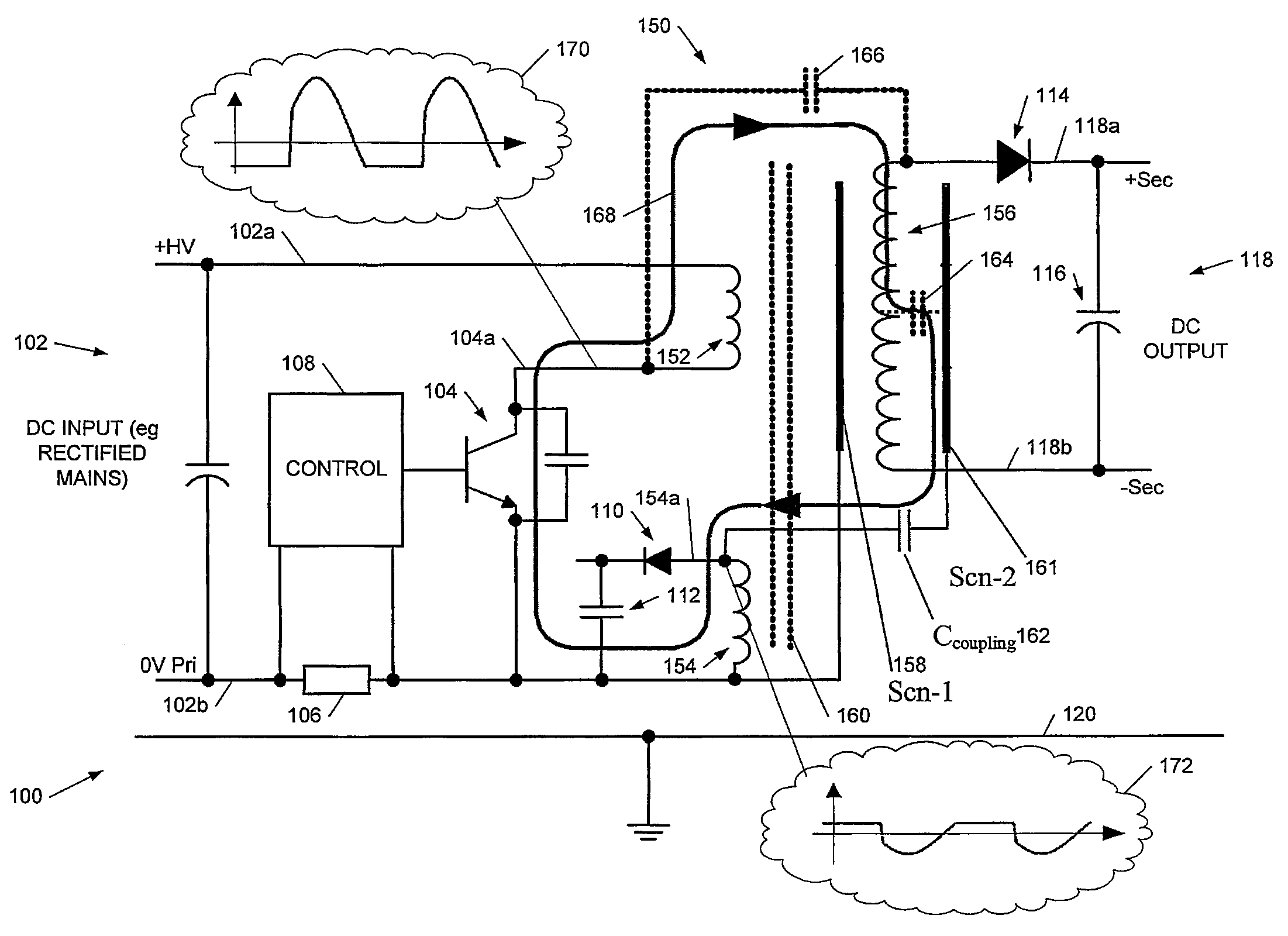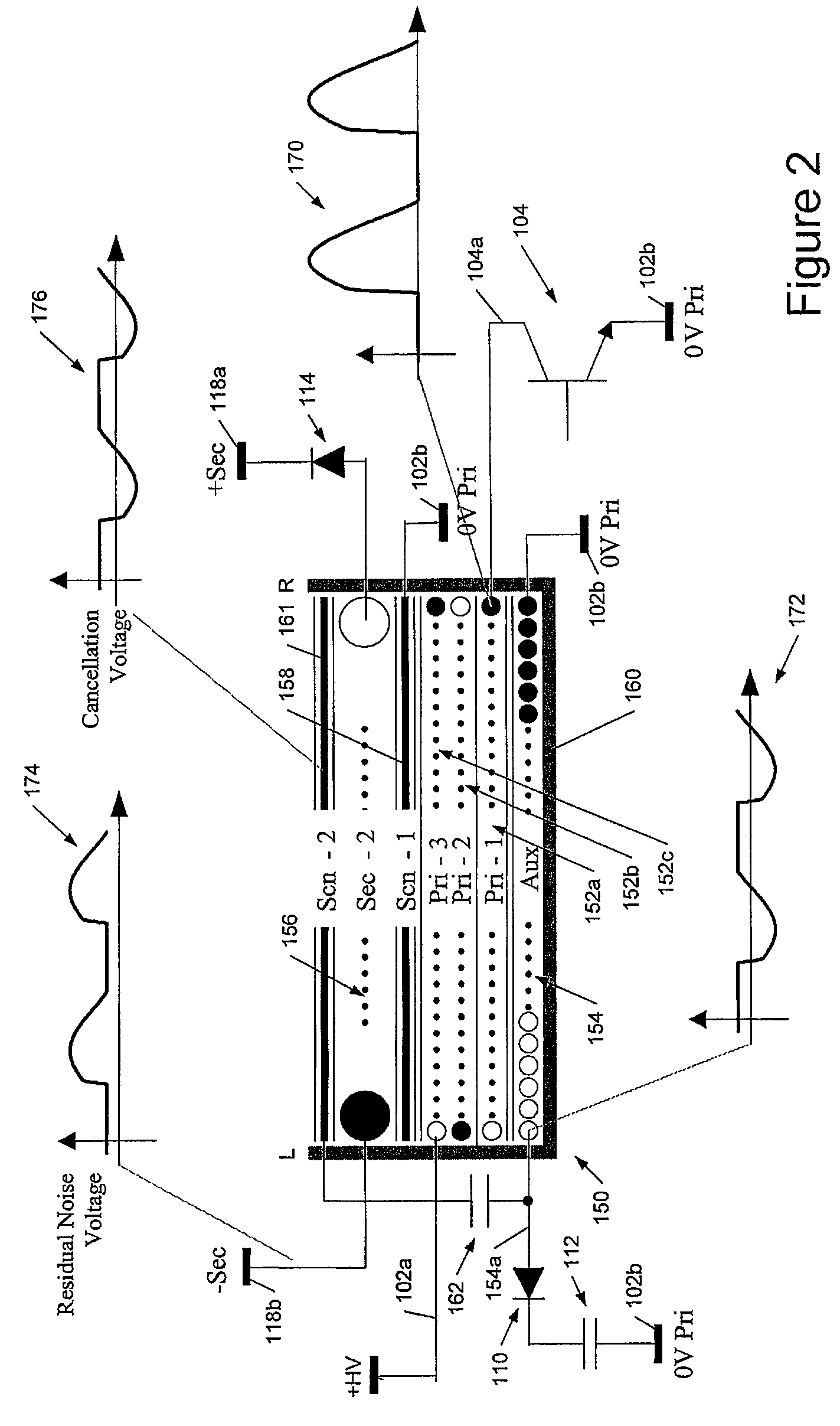Noise reduction systems and methods for unshielded coupling of switch mode power supply
a technology of unshielded coupling and power supply, which is applied in the direction of automatic control, process and machine control, instruments, etc., to achieve the effect of reducing common-mode nois
- Summary
- Abstract
- Description
- Claims
- Application Information
AI Technical Summary
Benefits of technology
Problems solved by technology
Method used
Image
Examples
Embodiment Construction
[0041]We will describe preferred embodiments of the invention implemented in switching power converters where the output is galvanically isolated from the power input. A common application is mains-powered low voltage DC supplies. Switching noise voltages caused by the power switch (or switches) can cause common-mode noise by capacitive coupling between the switching (input) circuits and the isolated output circuits. Embodiments of the invention can be applied to a wide variety of converter topologies including, but not limited to, flyback and forward converters.
[0042]Broadly speaking, embodiments of the present invention apply a cancellation signal to any convenient structure(s) other than a main inter-winding screen that is (are) capacitively coupled to the secondary winding, preferably in addition to such a main inter-winding screen. Examples include the transformer core itself and / or the flux band or another conductive shield associated with the secondary winding. We shall refer...
PUM
 Login to View More
Login to View More Abstract
Description
Claims
Application Information
 Login to View More
Login to View More - R&D
- Intellectual Property
- Life Sciences
- Materials
- Tech Scout
- Unparalleled Data Quality
- Higher Quality Content
- 60% Fewer Hallucinations
Browse by: Latest US Patents, China's latest patents, Technical Efficacy Thesaurus, Application Domain, Technology Topic, Popular Technical Reports.
© 2025 PatSnap. All rights reserved.Legal|Privacy policy|Modern Slavery Act Transparency Statement|Sitemap|About US| Contact US: help@patsnap.com



